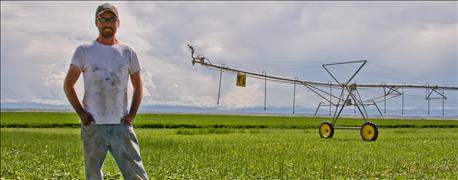Explore our blog featuring articles about farming and irrigation tips and tricks!
Turning Back Erosion With The Right Forage Mix, Crop Plan

By: Farm Progress, Western Farmer-Stockman
The wind can whip at 60 miles per hour across the Klein family farm near Pavillion, Wyo., and their sandy loam soil goes with it. Because of this, Garrett Klein, and his dad, Richard, and their respective families, decided to minimum till their malt barley and sugar beet fields, and began experimenting with no-till and a multi-species forage rotation.
Richard purchased the first section of their farm in 1979, and has produced alfalfa, malt barley and sugar beets on a rotating schedule of four years of beets then barley, and then four years of alfalfa. “After so many years, this started depleting our soil and organic matter,” says Garrett Klein. “We had a lot of problems with sand blowing on the farm, and so we’ve been trying to increase our organic matter to control erosion.
“We tried leaving barley stubble on top, but it just doesn’t stay. After harvest you can’t find any of the stubble, it’s all decomposed. We’re predominately sandy loam and if stuff isn’t left on the surface when winter comes and the wind starts to blow, [the soil] dries up and leaves.”
The Kleins worked with the USDA Natural Resources Conservation Service to transition from flood irrigation to center pivots and side rolls making it possible to consider no-till. “If you’re still farming with flood irrigation,” Klein says, “the residue on top [from no-till] prevents the water from running down the corrugates. So you’re pretty much required to roll the soil over. With a sprinkler, there’s no reason to keep burying the residue.”
Stay up to date on all T-L news and get alerts on special pricing!


